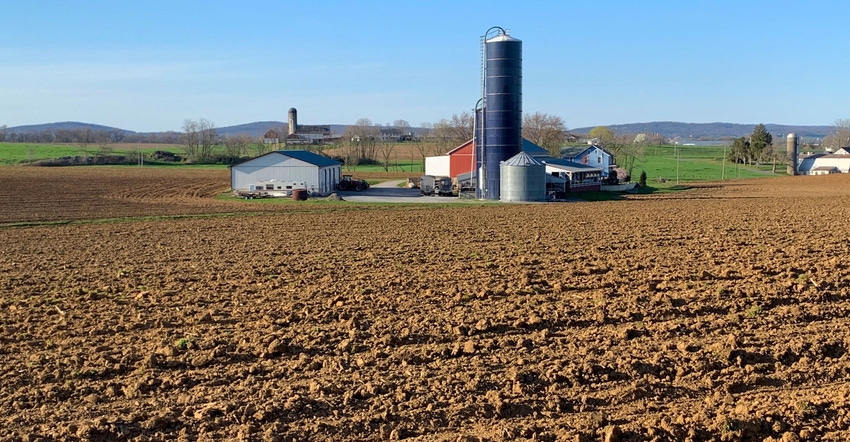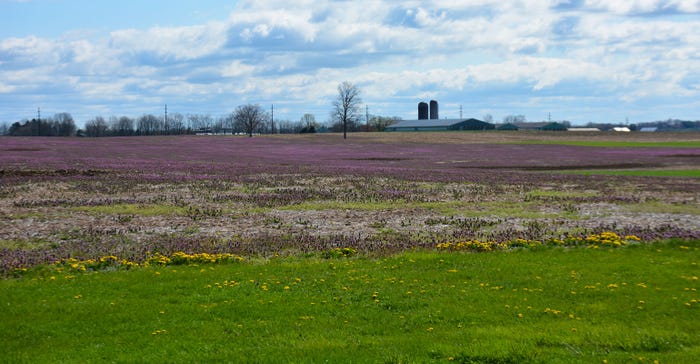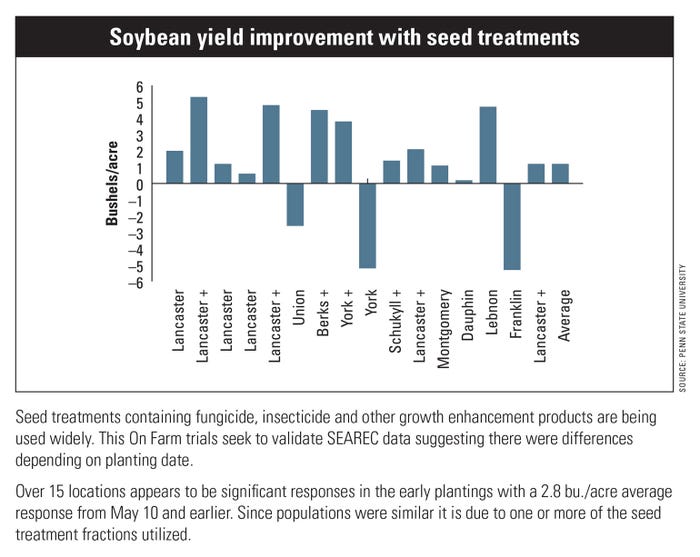
The recent stretch of nice weather has many growers antsy to get out and start planting. Add in COVID-19 and it’s no wonder planters will likely be rolling in parts of Maryland, Delaware and southeast Pennsylvania later this week.
“There is some planting going on right now,” says Jeff Graybill, Extension agronomist with Penn State Cooperative Extension. “Some guys have actually put some seeds in the ground. Don’t know if that’s wise or not. Only time will tell.”
Eric Wolgemuth, co-owner of Wolgemuth Custom Harvesting in Elizabethtown, Pa., says he and his brother, Rudy, will likely start planting corn and soybeans later this week, if the weather holds.
Most other farmers, though, aren’t rolling the dice.
“Mine can stay in the bag for a little,” says Bob Shearer, who farms 300 acres of his own and custom plants more than 2,000 acres in Mt. Joy, Pa. He used to push corn earlier in the season but has found that letting it go can result in just as good yields, especially in no-till. He’s waiting until the end of April.
Jeff Frey of Future View Farms in Willow Street, Pa., says he might put some seed in the ground later this week if the weather holds, but admits, “I’m never confident. It’s all dependent on the weather.”
Fragile crops
The ideal soil temperature for corn and soybeans is 50 degrees F. Anything less for a prolonged period can result in cold injury.
Cold temperatures and rain can lead to seed inhibition — when cold water rushing into the seed to rehydrate the cells ruptures them, leading to swollen kernels, aborted roots and chilling injury.
Spring in the Northeast can be wildly unpredictable as the past couple of years have shown.
“The last three years, we’ve had really cold and wet early May, and there were a lot of replantings,” Graybill says.
Farms with a heavy cover crop must especially be careful with starting too early since Roundup doesn’t work as well when it’s cold.
If you choose to plant early, Graybill recommends planting in soils that are dryer or are well-drained, and not planting deeper than an inch and a half. Also, make sure the seeds have a good seed treatment with two or three modes of action.
“I wouldn't want to plant too deep, so it's not locked in cold, wet soil,” he says. “Year in and year out, the top yields in corn seem to come from the corn planted the last week of April, though getting it in early is good.”
 SIGN OF SPRING: Blooming purple deadnettle, like on this farm outside Mt. Joy, Pa., is a sure sign that spring planting should get started. But it’s early yet, and farmers will be taking risks by going out too early.
SIGN OF SPRING: Blooming purple deadnettle, like on this farm outside Mt. Joy, Pa., is a sure sign that spring planting should get started. But it’s early yet, and farmers will be taking risks by going out too early.

Early planted soybeans can also benefit from a good seed treatment. In a 2016 study funded by the Pennsylvania Soybean Board, researchers looked at the effects of seed treatments — fungicide, insecticide and other growth enhancement products — on yields.
In 15 of 17 plots planted in 2016, the treatments helped to increase yields by 1.9 bushels an acre on average, compared to plots with no treatments. The best results were in soybeans planted in late
April and early May, where treatments bumped the yield average by 3.4 bushels an acre.

Getting that yield bump is crucial, according to Del Voight, Extension agronomist with Penn State, in order to justify the cost of putting on a seed treatment.
Better early or late?
Eric Rosenbaum, owner of Rosetree Consulting, says there is less production risk when planting early than when planting late. Remember, field crops, especially corn, need those growing degree days in order to achieve maximum growth to get to tasseling, silking and beyond.
Frey doesn’t mind waiting it out a little before planting. Last year the growing season started late because of wet weather, but it eventually dried out and he experienced solid crop yields.
Hess, though, isn’t chancing it. He has his planting date in mind.
“I’ve seen that all before. I don’t like to do the job more than once. The 20th is my date,” he says.
Find your 24-hour and 5-day soil temperature averages online through Syngneta’s GreenCast website.
More information on early plantings is available from both Pioneer and the University of Nebraska-Lincoln’s CropWatch series.
About the Author(s)
You May Also Like






